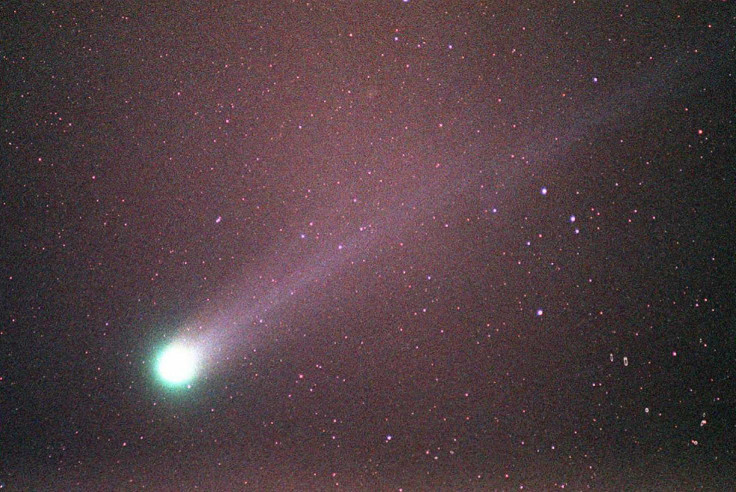See Stunning Photos Of Blue-Green Comet Iwamoto That Only Appears Every 1,371 Years

The brilliant comet C/2018 Y1 Iwamoto zipped by the Earth last week, and skygazers around the world managed to capture photos and videos of the incredibly rare sight.
The blue-green Comet Iwamoto was discovered by amateur astronomer Masayuki Iwamoto only two months ago. The celestial body is covered in ice and orbits the sun in a highly elliptical path that takes over a thousand years to complete. After this recent sighting, the comet won't appear in the Earth's night sky again until the year 3390 as it takes 1,371 years to finish its orbit.
According to NASA's Horizons database, Comet Iwamoto is, at the moment, zooming through the solar system at a speed of about 148,000 miles per hour (238,000 kilometers per hour). On Feb. 12, it made its closest approach to Earth at a distance of about 28 million miles (45 million kilometers) at around 3:10 p.m. EST (2010 GMT), according to EarthSky.org.
The closest Comet Iwamoto came to the Sun, a point in its orbit called the perihelion, was at a distance of 26 million miles (42 million kilometers) on Feb. 7.
Skygazers around the world were able to see the Comet Iwamoto for themselves with the use of binoculars and small telescopes on Feb. 12 and 13. See some of the photos and videos taken of Comet Iwamoto during its closest approach to the Earth below.
Amazing Photos of Comet 2018/Y1 Iwamoto! https://t.co/HtKVf9JxT7 pic.twitter.com/DF5PQ8VODo
— SPACE.com (@SPACEdotcom) February 16, 2019
Awesome! #Comet Iwamoto At Perigeum With Spiral Galaxy NGC 2903
— Space Science 🛰️Technology⚡️ (@PMagnetE) February 16, 2019
Taken by Dr. Fritz Helmut Hemmerich on Feb 13, 2019 Spain. #ESA, #NASA, #Astrophotography pic.twitter.com/ABvJ1lYG5v
C/2018 Y1 on the evening of the 10 Feb 2019 #comet #iwamoto pic.twitter.com/nsCAYyfxhG
— dswanastro (@dswanastro) February 11, 2019
Comet C/2018 Y1 (Iwamoto) Thursday night passing through unfashionable backwaters of Cancer. Faint background stars range from magnitude 11 to 16. Each frame 10 x 4 sec unfiltered mono in Celestron 8" + 0.33x reducer. pic.twitter.com/usZi7jPKLt
— Christian Fröschlin (@chrfrde) February 17, 2019
After Feb. 13, the comet could only be viewed using powerful telescopes as it makes its way back to the farthest reaches of the solar system.
Comet Iwamoto is part of the class of solar system bodies called the Extreme Trans-Neptunian Objects, according to Spaceweather.com. These objects hail from the distant outskirts of the solar system and are at least five times as far away from the sun as the dwarf planet Pluto.
Check out more photos and videos of Comet Iwamoto here.
© Copyright IBTimes 2024. All rights reserved.





















